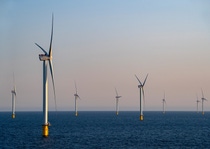Media
BASF’s Intermediates division converts its entire European amines portfolio to 100 percent renewable electricity
- Amines produced with renewable electricity will be the new standard portfolio
- Expected annual emissions reduction of about 188,000 tons of CO2 equivalents as of 2025, compared with 2020[1]
- Customers benefit from a reduction of their Scope 3 emissions and a seamless transition to the new standard portfolio
BASF’s Intermediates division, one of the world’s largest amines producers, is taking the next step towards more sustainability by converting its entire European amines portfolio to 100 percent renewable electricity. The transition starts in May 2025 and will apply to all amines produced at the European production sites in Ludwigshafen, Germany, and Antwerp, Belgium.
Expected annual reduction of about 188,000 tons of CO2 equivalents
The conversion is expected to result in an annual reduction of about 188,000 tons of CO2 equivalents as of 2025 compared with the base year 2020. This corresponds to an average product carbon footprint (PCF) reduction of about 8 percent across
the entire amines portfolio. Thus, the transition marks an important milestone in the Intermediates division’s efforts to contribute to BASF’s sustainability goal to reduce Scope 1 and 2 emissions by 25 percent by 2030 compared with 2018[2].
Vasilios Galanos, Senior Vice President Europe at BASF’s Intermediates division, explains: “Sustainability starts with us. By converting our European amines portfolio to 100 percent renewable electricity, we contribute to our ambition to be the preferred partner for sustainable intermediates for our customers. Our amines, now produced with renewable electricity as our new standard, will help us to further reduce CO2 emissions, lower the carbon footprint of our products and position ourselves in the market.”
Customers benefit from Scope 3 reductions and a seamless transition
Customers benefit from the PCF reduction and can account for it in their Scope 3 targets. The switch to the new standard portfolio using renewable electricity will be seamless, without requiring product recertification or changes to the order process. Wolfgang Kanther, Vice President Amines Europe at BASF’s Intermediates division, says: “With renewable electricity, we help our customers to progress on their sustainability journey. We are developing additional offers to meet our customers’ demands and look forward to engaging in discussions about solutions to further reduce the product carbon footprint.”
Conversion marks a further step in the division’s roadmap to offer a more sustainable amines portfolio
The shift to renewable electricity for the entire European amines portfolio marks a further step within a broader initiative to incorporate more sustainable practices across BASF’s global intermediates portfolio in the years to come. The option of using low-emission steam and procuring of key raw materials with a reduced PCF, such as methanol or ammonia, are constantly being evaluated based on customer feedback. In this way, the Intermediates division offers a roadmap to support its customers’ sustainability targets. This ambition will be supported by BASF’s ongoing investment in new processes and technologies such as heat pumps as well as by its Renewable Carbon unit, which is dedicated to optimizing renewable feedstock sourcing.
About BASF
At BASF, we create chemistry for a sustainable future. Our ambition: We want to be the preferred chemical company to enable our customers’ green transformation. We combine economic success with environmental protection and social responsibility. Around 112,000 employees in the BASF Group contribute to the success of our customers in nearly all sectors and almost every country in the world. Our portfolio comprises, as core businesses, the segments Chemicals, Materials, Industrial Solutions, and Nutrition & Care; our standalone businesses are bundled in the segments Surface Technologies and Agricultural Solutions. BASF generated sales of €65.3 billion in 2024. BASF shares are traded on the stock exchange in Frankfurt (BAS) and as American Depositary Receipts (BASFY) in the United States. Further information at www.basf.com.
[1] Reduction includes Scope 1, 2 and 3.1 emissions and was conducted in comparison with the base year 2020, which marks the beginning of BASF’s Product Carbon Footprint (PCF) calculations and the gradual electrification of sites. Calculation is based on equivalent production volumes as in 2020. BASF’s PCF calculations follow the requirements and guidance given by ISO 14067:2018. In a methodology review, TÜV Rheinland has certified that the PCF methodology SCOTT developed and used by BASF SE for calculating the PCFs of BASF products is scientifically-based, is in accordance with ISO 14067:2018 and the Together for Sustainability PCF Guideline, and reflects the state of the art (ID-Nr. 0000080389: BASF SE-Certipedia).
[2] For more information about BASF‘s climate protection goal, visit: https://www.basf.com/global/en/who-we are/sustainability/enabling-the-green-transformation-of-our-
customers/sustainability-targets.
P-25-086

